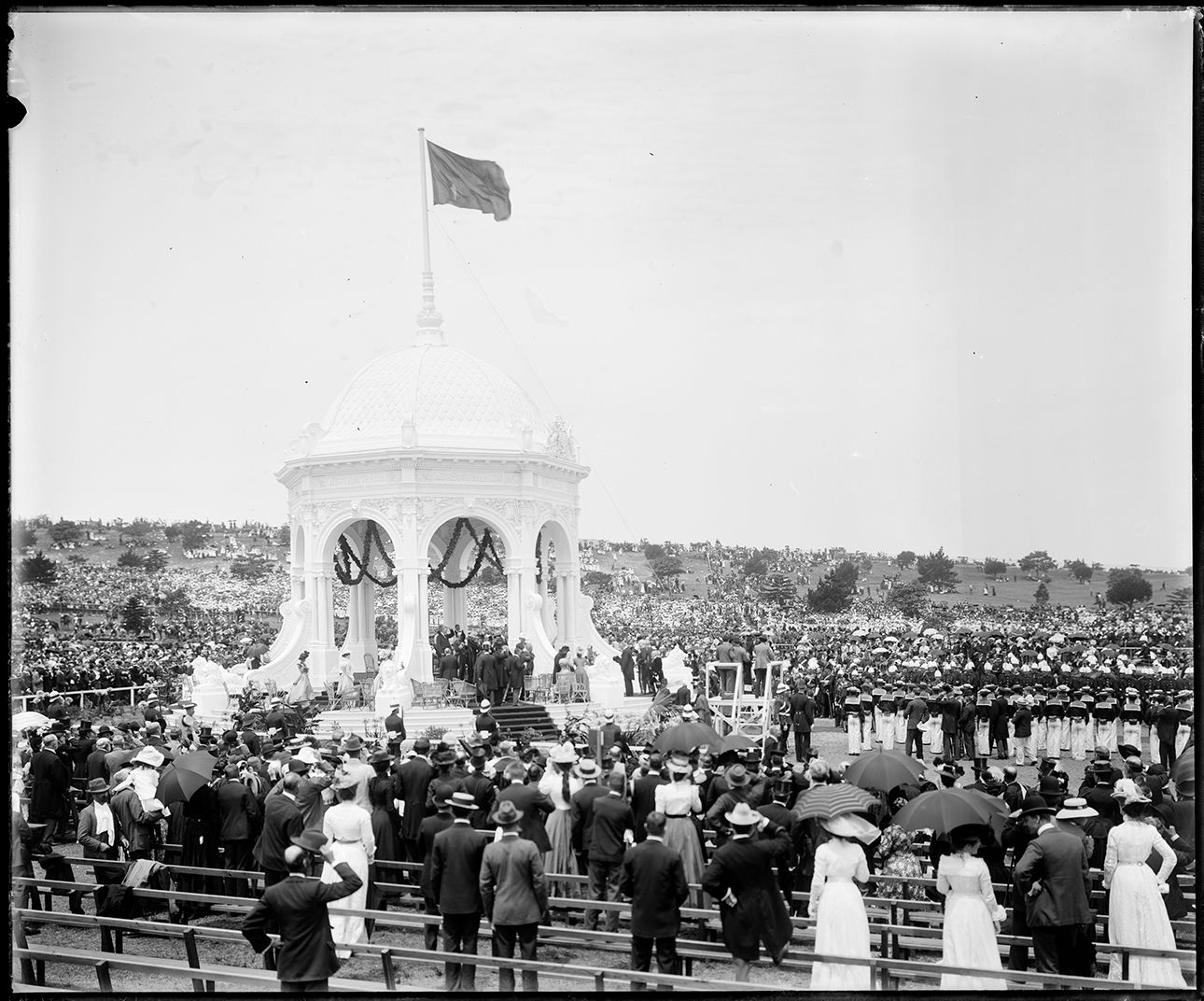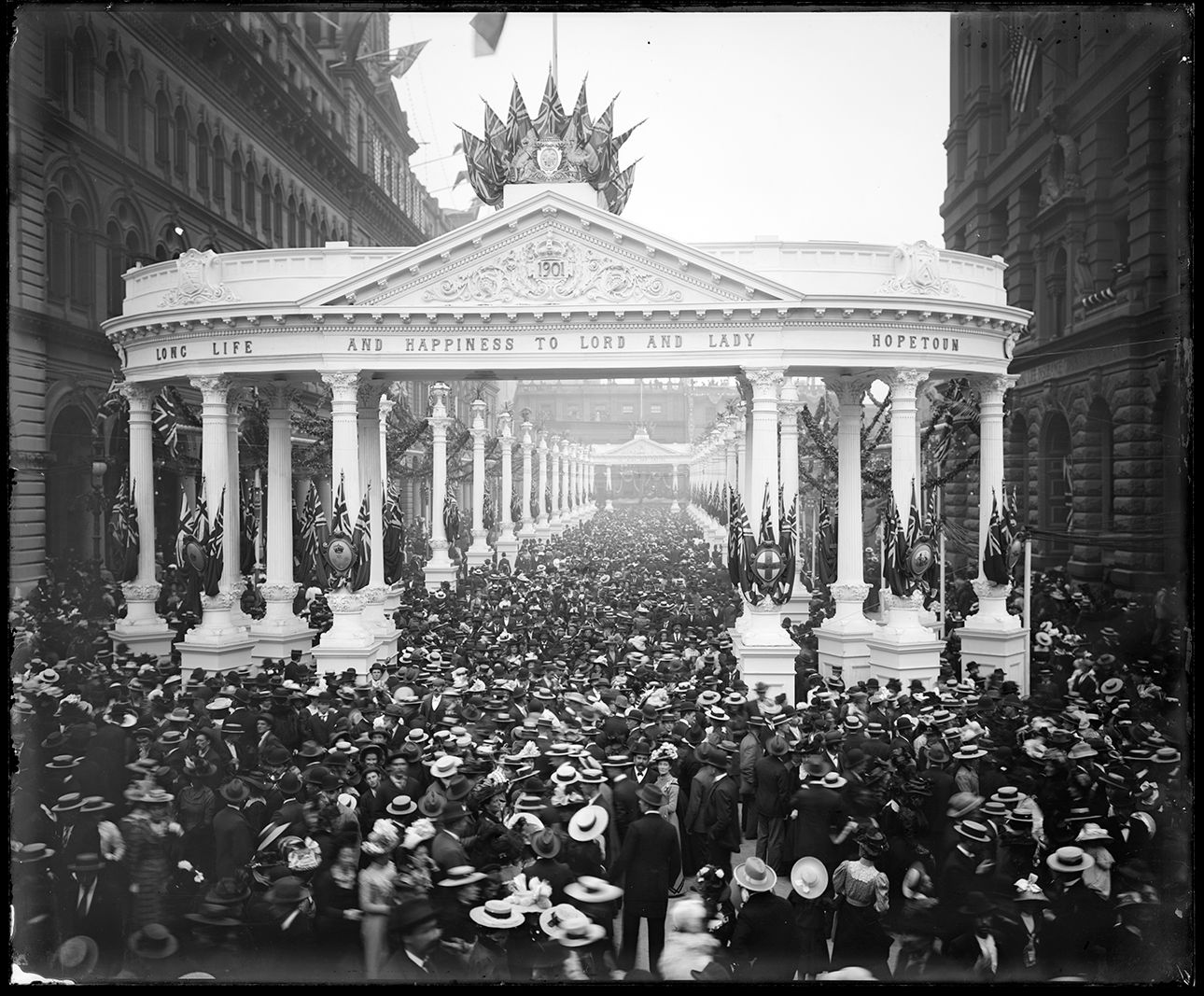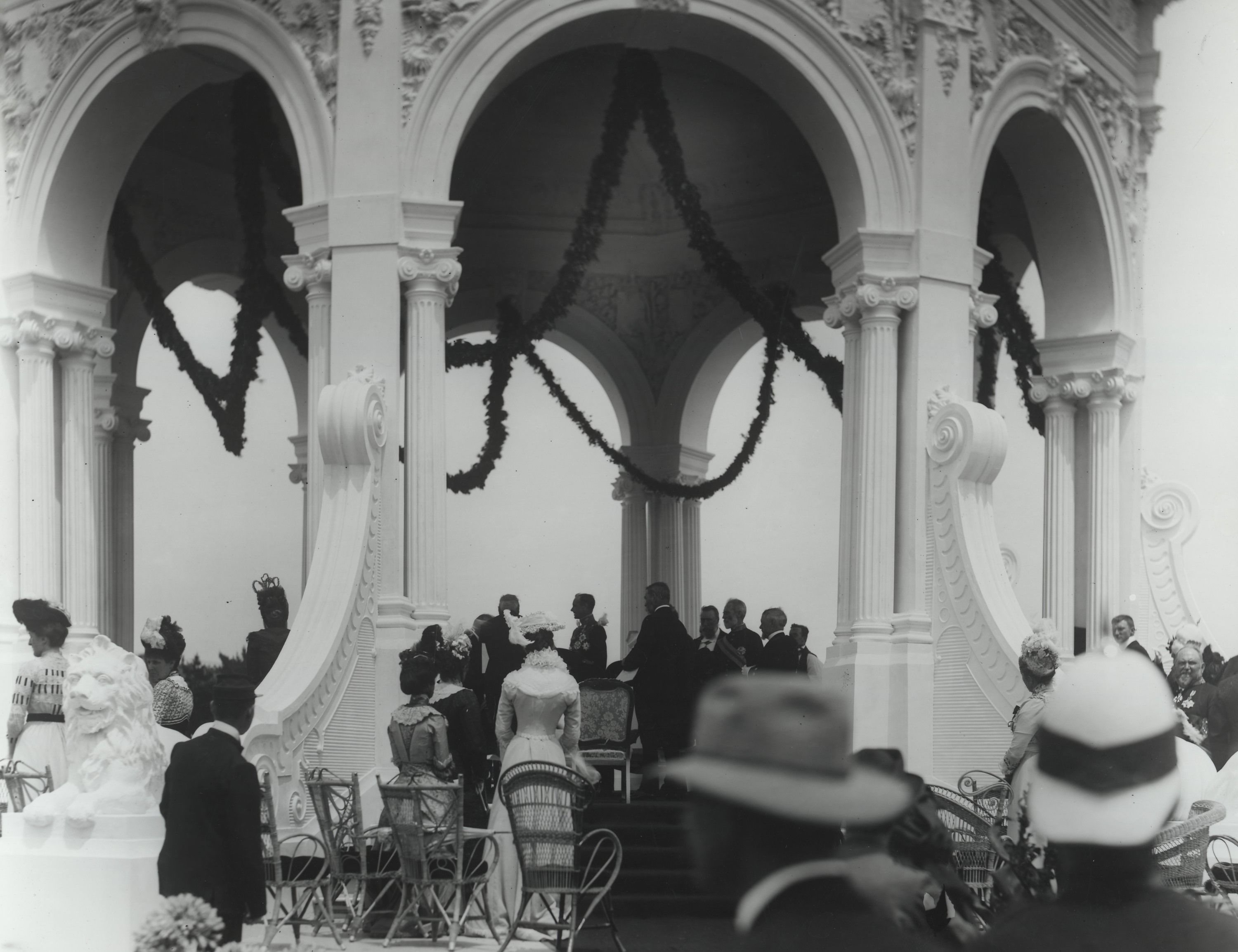Federation timeline
Significant events 1846-2001
The process to federate the six Australian colonies into the Commonwealth of Australia took over fifty years from its beginnings in the 1840s to the official proclamation on 1 January 1901.
Timeline
Year | Event |
|---|---|
1846 | 29 September Governor FitzRoy of New South Wales in a despatch suggested the need for a 'central intercolonial authority' |
1847 | Earl Grey proposed a central legislative authority |
1850 | Australian Colonies Government Act passed by British Parliament |
1851 | Victoria separated from New South Wales |
1855 | Van Diemen's Land renamed Tasmania |
1856 | Self government achieved |
1857 | Select Committees in New South Wales, Victoria and South Australia held to discuss the possibility of a federal union |
1859 | Queensland separated from New South Wales |
1863 | Intercolonial Conference of Treasurers held in Melbourne to discuss uniform tariffs and customs |
1867 | Union of the Canadian dominions |
1870 | British troops withdrawn |
1871 | Australian Natives Association established |
1872 | Overland telegraph lines completed between Adelaide and Darwin |
1873 | Australian Colonies Duties Act passed by British Parliament |
1877 | Britain was defeated in the first cricket test by a team from Victoria and New South Wales |
1881 | Henry Parkes proposed a Federal Council to consider matters of joint interest to the Australasian Colonies |
1883 | Queensland annexed New Guinea Proposal to establish Federal Council formalised by Premiers |
1885 | Sudan Contingent An Act to Constitute the Federal Council of Australasia passed by British Parliament |
1886 | First meeting of Federal Council in Hobart. Representatives from Western Australia, Fiji, Queensland, Tasmania and Victoria attended. New South Wales refused to join |
1889 | Major-General Sir J. Bevan Edwards reported on the defence of the Australian Colonies 24 October Sir Henry Parkes made a speech at Tenterfield calling for 'a great national government for all Australia' |
1890 | Melbourne conference held to discuss the National Convention |
1891 | The First National Australasian Convention held in Sydney |
1893 | Corowa Convention |
1895 | Premiers Conference in Hobart agreed to a second Constitutional Convention with elected delegates from each colony |
1896 | 27 April Death of Sir Henry Parkes November People's Federal Convention held in Bathurst |
1897 | 22 March-23 April First Session 2–24 September, Second Session of The Second National Australasian Convention held |
1898 | 20 January-17 March Third Session of The Second National Australasian Convention adopted a draft constitution 3 June New South Wales referendum failed to reach statutory minimum |
1899 | 24-27 January Last meeting of the Federal Council of Australasia held 29 January-2 February 'Secret' Premiers meeting in Melbourne agreed to six amendments to the Constitution Bill including that the site of the Capital be in New South Wales, but not within 100 miles of SydneyApril-September New South Wales, Victoria, South Australia, Tasmania & Queensland voted 'Yes' in referenda. Only Western Australia refrainedWar in South Africa began (Boer War) |
1900 | March Australian delegates went to London to negotiate the enactment of the Constitution June–July Commonwealth of Australia Constitution Act is passed by British Parliament 9 July Queen Victoria gave the Royal Assent to the aforementioned Act 31 July Western Australia joined the Federation after a Yes vote in the referendum 21 September Lord Hopetoun was officially appointed as Governor-General of Australia |
1901 | 1 January The Commonwealth of Australia is proclaimed and inauguration ceremonies are held at Centennial Park, Sydney with the swearing-in of the Governor-General and interim federal ministry 22 January Death of Queen Victoria 29 March First federal elections held. Edmund Barton confirmed as first Prime Minister 31 March Census held in all States 9 May The first Commonwealth Parliament opened by the Duke of Cornwall and York (later King George V) in Melbourne December First Commonwealth troops embarked to fight Boers in South Africa |
1902 | Vote extended to all women but denied to Aboriginal people by the Commonwealth Franchise Act |
1903 | Commonwealth Naturalization Act passed |
1904 | Court of Conciliation and Arbitration established |
1907 | First federal basic wage handed down by Court of Conciliation and Arbitration |
1908 | Commonwealth Invalid and Old Age Pensions Act passed National capital site selected in the Yass–Canberra District |
1909 | New South Wales surrendered territory for the seat of the Commonwealth Government |
1910 | Australian Notes Actwas passed which gave the Commonwealth Government power to issue bank notes |
1911 | Responsibility for the Northern Territory transferred from South Australia to the Commonwealth Government |
1912 | Commonwealth Bank established Walter Burley Griffin won the international competition to design the federal capital |
1913 | Commonwealth Government issued its first stamps Federal capital named CanberraNorfolk Island transferred to the Commonwealth from New South Wales control |
1914 | Australia entered World War I |
1915 | 25 April ANZACS landed at Dardanelles and fought at Gallipoli Responsibility for lighthouses transferred to Commonwealth Government |
1916 | First Anzac Day commemorated |
1918 | World War I ended Australia House (London) opened by King George V |
1919 | Influenza pandemic William Hughes, Australian Prime Minister attended the Versailles Peace Conference |
1921 | Edith Cowan (Western Australia) first woman elected to an Australian Parliament |
1922 | British Empire Settlement Act passed by Commonwealth Government to encourage British immigrants and to settle rural lands came into force. Agreements were made between the British, Commonwealth and State Governments |
1924 | Federal Cabinet met in Canberra for the first timeCompulsory voting in Federal elections introduced |
1927 | 9 May The Duke of York (later King George VI) opened Parliament in Canberra |
1951 | Commonwealth Jubilee (50th anniversary) |
2001 | Centenary of Federation |
Related
Browse all
Federation of Australia - Part 1: 1840-1879
The process to federate the six Australian colonies into the Commonwealth of Australia took over fifty years from its beginnings in the 1840s

Federation of Australia - Part 2: 1880-1900
The 1880s proved to be 'the turning point at which the 'federal idea' found in all the schemes of the previous forty years would be transformed into the Federation movement'

Federation of Australia - Part 3: 1901-1914
The Commonwealth of Australia came into being on Tuesday 1 January 1901. The colonies became States and the transfer of powers, functions and property to the Commonwealth Government began

Celebrating federation
The Commonwealth of Australia was proclaimed on 1 January 1901. The Federation Pavilion in Sydney’s Centennial Park was the focus of the inauguration ceremonies and a five mile procession through the decorated streets of Sydney was greeted by large crowds